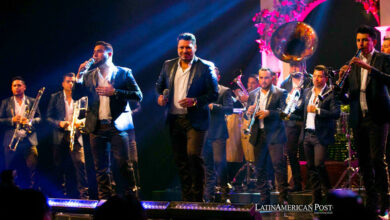Which are the most emblematic stadiums in Argentina?
The gaucho country has facilities of great capacity and worldwide recognition

Leer en español. ¿Cuáles son los estadios más emblemáticos de Argentina?
Argentina is known for being one of the most soccer-loving countries, so much so that the organized practice of this sport in the country is one of the oldest and most traditional in the world. In order to conserve the football heritage, multiple scenarios of great importance have been built in Latin America.
According to the opinions of the users of the web portal “listas 20 minutos”, the best stadiums in Argentina are:
1. Monumental Stadium Antonio Vespucio Liberti: also known as "Estadio Monumental" or " Monumental de Núñez", is located in Buenos Aires, in the Belgrano neighborhood. This is the stadium with the greatest capacity in Argentina, as it houses 66,449 spectators and it is the ninth largest stadium in the Americas. The owner is Club Atlético River Plate and is the usual venue for the matches played by the Argentine National Soccer Team. In this stadium, the final of the 1978 Soccer World Cup was played.
2. Estadio Alberto J. Armando: commonly known as "La Bombonera", it is located in the neighborhood of La Boca, in Buenos Aires. The stadium is owned by Club Atlético Boca Juniors and is recognized as one of the most emblematic stadiums in the world, so much so that in 2014, it was declared as a sport, tourist, and cultural place of interest of the City of Buenos Aires. The stadium is known with the phrase "The Bombonera does not tremble, beats", because the combined effect of the fans singing, applauding and, especially, jumping, makes the ground vibrate as if it were a small earthquake.
3. Stadiums of Avellaneda: In the city of Avellaneda there are two stadiums of great importance at a small distance. The first is the Presidente Juan Domingo Perón stadium, better known as "Presidente Perón Stadium" or "El Cilindro de Avellaneda". This is owned by Racing Club and it is the first stadium in Argentina that has all of its roofed stalls, thanks to a celestial cover, light, and translucent roof. It is mounted on a metal structure that in turn supports a modern lighting system; in addition, it is the first stadium in the Argentinean first division that does not have perimeter fencing. The second is the Estadio Libertadores de America, known until 2005 as "The Double Visor", it accommodates 52,823 spectators and is the Stadium of the Independent Athletic Club.
4. Mario Alberto Kempes Stadium: better known as "Chateau Carreras", because it is located in the natural reserve of the Chateau Carreras in the city of Córdoba. The stadium has capacity for 57,000 spectators and is the second largest in the country, after the Monumental Stadium. It belongs to and is administered by the Government of the Province of Córdoba and plays the premises of Córdoba Capital Club: Belgrano and Talleres, one of the most exciting and unknown derbies in the country.
5. Ciudad de La Plata Stadium: popularly known by the former name of "Estadio Único", it is located in the city of La Plata, province of Buenos Aires. The stadium has a capacity for 53,000 spectators and is owned by the Chief of Cabinet of Ministers. In its inauguration, it was considered the most modern stadium in Latin America and in 2008, there was for the first time the venue of an international final, in the first leg of the decisive instance of the Copa Sudamericana that faced Estudiantes de La Plata with Inter of Porto Alegre.
6. Estadio General Brigadier Estanislao López: it is commonly known as "The Cemetery of the Elephants". The stadium is located in the city of Santa Fe and it has a capacity for 37,000 spectators and belongs to Club Atlético Colón.
7. Tomás Adolfo Ducó Stadium: better known as "El Palacio", it is located in the city of Buenos Aires and is owned by Club Atlético Huracán. Due to its architectural beauty it has served as a filming studio and as a background for various photographs, and its great acoustics has allowed recording live discs.
Latin American Post | Andrea del Pilar Rojas Riaño
Translated from “ ¿Cuáles son los estadios más emblemáticos de Argentina?”





